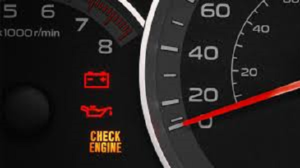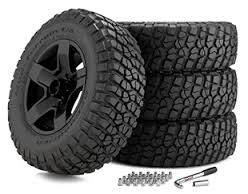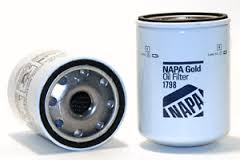Posted on 1/20/2022

When a car uses a lot more gas than normal, we find that the “check engine” light is also on. I’m guessing this is true for your car. With this information, I’m thinking your vehicle may have an O2 sensor (oxygen sensor) that is bad. The O2 sensors that we use today were developed in 1990. O2 sensors monitor how much unburned oxygen is in the exhaust as it passes through the engine. It tells your car’s computer if the fuel mixture is burning rich (less oxygen, more fuel) or lean (more oxygen less fuel). Sounds like your car’s engine is being forced to guess how much gasoline to use; therefore, this could be why your car is using a lot of gas lately. The actual number of oxygen sensors for a car depends on the year, make, model and engine. However; most of the later model vehicles have four oxygen sensors. A computer diagnostics check will be run. Also, a test for each sensor will be done to determi ... read more
Posted on 1/17/2022

Finding the size of tires that your car came with from the factory is easy. Open the driver’s door, you will see a factory sticker on the door post. This sticker will have the factory tire information….the size of tires, speed rating and the recommended tire pressure. When your car came from the factory, many of the computer settings and the speedometer calibration were set for the size tire listed on the door. It is best to follow these tire recommendations if you can
Posted on 1/12/2022

Your car’s oil filter works hard trapping contaminants. The filter helps lubricate internal parts of your car and also helps cool the engine. As your engine runs, dirt gets into the oil. Oil sludge can also start to build up. Fortunately, the oil contains detergents that clean the engine. An oil filter can eventually get clogged up – in severe cases, so much so that oil cannot flow freely through the filter and do its job. A very good reason to make sure you are up to date on your oil changes
Posted on 1/4/2022

Our vehicles today have several different types of filters. Each filter typically has its own maintenance schedule for being replaced. There is a matching quiz at the end, if you would like to take that challenge. While many replacement schedules for changing filters is in your manual, here are some helpful tips from our NAPA friends: Oil filter– gets changed during a regular oil change; remember the type of driving you do may change the frequency of your oil changes Air filter— works with the oil filter to keep the engine clean, usually made out of paper or some other thin material Transmission filter— this filter catches any dirt that may be in the fluids inside your vehicle’s transmission. Cabin air filter— prevents pollen and dust from going through the heating and cooling system into where you sit. If the heater or air conditioning smells when you turn it on; the cabin air filter probably needs to be replaced. A ... read more
Posted on 1/4/2022

Oh my, are you keeping warm? While your vehicle has been helping to take care of some of your needs; here are some things to consider on taking care of its needs (yes, it’s not too late). CAR CARE ITEMS Battery care: Without a working battery…. well, this is a must. With the engine off, check to see if the cables can slip free from the posts. Don’t yank them, but pull firmly. Also, check battery for corrosion, the white powdery substance that can form around the nodes or clamps. If you find corrosion or your battery is older than 3 years old, the battery may need to be replaced. Serpentine belt: The back side of the serpentine belt has grooves like a tire. If they are cracked or worn you will want to replace it. Again, sooner than later applies. If you wait too long it will snap and break. Fluids: Windshield wiper fluid made for cold weather is worth the little extra money. It contains a greate ... read more